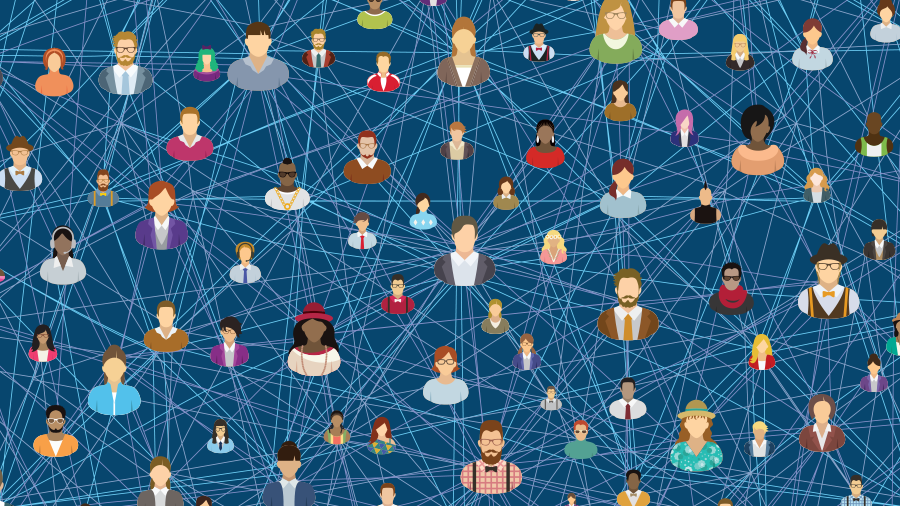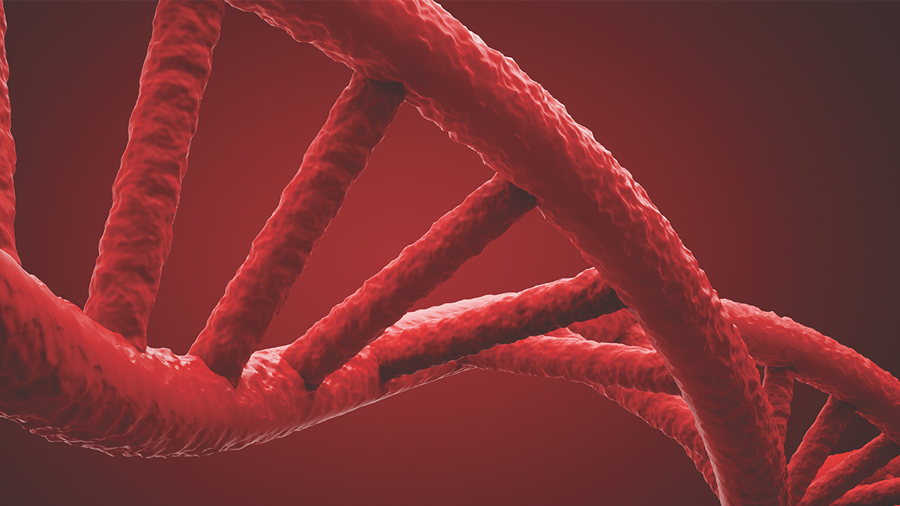Calendar of events, awards and opportunities
Every week, we update this list with new meetings, awards, scholarships and events to help you advance your career. If you’d like us to feature something that you’re offering to the bioscience community, email us with the subject line “For calendar.” ASBMB members’ offerings take priority, and we do not promote products/services. Learn how to advertise in ASBMB Today.
Oct. 24–29: SACNAS National Diversity in STEM Conference
The Society for Advancement of Chicanos/Hispanics and Native Americans in Science will hold its national meeting Oct. 25–29 online. Registration opens Aug. 2, and SACNAS members get discounts. See what's on the agenda.
Oct. 27: "Scientific knowledge for everyone" webinar
In observance of Open Access Week, Annual Reviews will convene a panel of researchers and a science journalist to discuss the value of communicating science within and beyond the academy. Here's an excerpt from an email we received about the event: "The conversation will explore issues ranging from the societal — such as the need for scientific findings to inform sound policy responses to the pandemic and climate change — to the personal, through stories from the speakers’ working lives where unlocking knowledge helped guide individual decisions or spark an appreciation of the natural world." See the speakers and register.
Oct. 30: Apply for PALM fellowship
The Promoting Active Learning and Mentoring (PALM) Network is accepting applications from postdocs and faculty members who wish to learn about and get better at implementing evidence-based active learning. This program is supported by the National Science Foundation. During the COVID-19 pandemic, fellows and mentors will participate virtually. Learn more.

ASBMB Lipid Research Division Seminar Series
The ASBMB Lipid Research Division features the work of young investigators at noon Eastern on a Wednesday of each month. If you are interested in presenting, please contact John Burke. Register once to access the whole series.
Here are the speakers for the Nov. 3 event:
Holly Merta of Yale University: Cell cycle regulation of ER membrane biogenesis through CTDNEP1 control of lipin 1 is required for mitotic fidelity
Huan Wang of University of California, Los Angeles: Lipin 1 modulates mRNA splicing during fasting adaptation in liver

Important 2022 ASBMB Annual Meeting deadlines
The ASBMB annual meeting will be held in person in Philadelphia in April. Here are the deadlines you need to know.
Registration
- Feb. 7: Early registration (largest discount) ends
- Feb. 8: Advance registration (smaller but still significant discount) begins
- March 18: Advance registration ends
- March 19: Regular registration begins
Abstracts
- Nov. 30: Regular submissions end
- Dec. 15: Last-chance submissions begin
- Jan. 27: Last-chance submissions end
Travel awards
- Dec. 7: Deadline for applications
Dec. 1: Deadline for HHMI Hanna H. Gray Fellows Program
The Howard Hughes Medical Institute is accepting applications from underrepresented scientists for its Hanna H. Gray Fellows Program. Up to 25 fellows will win grants for postdoctoral training and will be eligible for continued funding as they begin their independent careers. Learn about eligibility and application materials.
Jan. 2: AAAS mass media fellowship application due
The American Association for the Advancement of Science's Mass Media Science & Engineering Fellowship has earned much praise over the years for training scientists to become professional science writers and communicators. The application period for the next 10-week summer program is Jan. 2. We strongly encourage emerging scicommers, in particular those who wish to work in newsrooms, to consider applying. Learn more about the program.

Jan. 10: Submit an abstract for the ASBMB Deuel Conference on Lipids
The ASBMB Deuel conference is a must-attend event for leading lipids investigators — and for scientists who’ve just begun to explore the role of lipids in their research programs. This event will bring together a diverse array of people — including those who have not attended Deuel or perhaps any lipid meeting before.
The meeting will be held March 1–4 in Monterey, Calif.
“We'd love to bring in people who might not have cut their teeth in the lipid metabolism field but have found their way to studying lipids. In many cases, that's where you get the most exciting, unusual and off-the-wall presentations, and that can spark collaborations that may have otherwise not have happened,” explains co-organizer Russell DeBose-Boyd.
This year's theme is "Location, location, location: How lipid trafficking impacts cell signaling and metabolism."
Co-organizer Arun Radhakrishnan explains it this way: “In recent years, we have begun to gain deep insights into the mechanisms of lipid trafficking. We thought it would be great to have a meeting focusing on that aspect and what those what these new insights are telling us about cell signaling and metabolism.”
Abstracts are being accepted through Jan. 10. See the program and submit.
Jan. 23: Papers about STEM education and workforce due
The Journal of Science Policy & Governance and Sigma Xi, The Scientific Research Honor Society, have launched a call for papers on "Re-envisioning STEM Education and Workforce Development for the 21st Century." The journal will produce a special issue with the winning submissions. The deadline is Jan. 23. ASBMB Today contributor Adriana Bankston is the journal's CEO and managing publiusher. She told us in an email: "For the issue, we are seeking op-eds and policy position papers for re-envisioning the landscape in the light of the COVID-19 pandemic, and building forward a future that is focused on equity and inclusion, access to technology, and aligning training opportunities with workforce demands. First, second and third place competition winners will be awarded cash prizes." Here's the call for submissions.

Call for virtual scientific event proposals
The ASBMB provides members with a virtual platform to share scientific research and accomplishments and to discuss emerging topics and technologies with the BMB community.
The ASBMB will manage the technical aspects, market the event to tens of thousands of contacts and present the digital event live to a remote audience. Additional tools such as polling, Q&A, breakout rooms and post event Twitter chats may be used to facilitate maximum engagement.
Seminars are typically one to two hours long. A workshop or conference might be longer and even span several days.
Prospective organizers may submit proposals at any time. Decisions are usually made within four to six weeks.

Evolution and core processes in gene expression
Coming to an in-person venue in the summer of 2022: The focus of this meeting is to discuss the most recent insights into the cis-regulatory code, how cis-regulatory information is read out by transcription factors, signaling pathways and other proteins, how cellular diversity is created during development and how we can study this problem using cutting-edge genomics technology and computational methods.
The meeting will simultaneously examine the problem from an evolutionary perspective: how cis-regulatory elements evolve, how regulatory variation affects gene expression and phenotypes, how these changes have shaped development and parallel evolution, and how noise affects regulatory circuits and their evolution.
Enjoy reading ASBMB Today?
Become a member to receive the print edition four times a year and the digital edition monthly.
Learn moreFeatured jobs
from the ASBMB career center
Get the latest from ASBMB Today
Enter your email address, and we’ll send you a weekly email with recent articles, interviews and more.
Latest in Careers
Careers highlights or most popular articles

Embrace your neurodivergence and flourish in college
This guide offers practical advice on setting yourself up for success — learn how to leverage campus resources, work with professors and embrace your strengths.

Upcoming opportunities
Apply for the ASBMB Interactive Mentoring Activities for Grantsmanship Enhancement grant writing workshop by April 15.

Quieting the static: Building inclusive STEM classrooms
Christin Monroe, an assistant professor of chemistry at Landmark College, offers practical tips to help educators make their classrooms more accessible to neurodivergent scientists.

Unraveling oncogenesis: What makes cancer tick?
Learn about the ASBMB 2025 symposium on oncogenic hubs: chromatin regulatory and transcriptional complexes in cancer.

Exploring lipid metabolism: A journey through time and innovation
Recent lipid metabolism research has unveiled critical insights into lipid–protein interactions, offering potential therapeutic targets for metabolic and neurodegenerative diseases. Check out the latest in lipid science at the ASBMB annual meeting.

Hidden strengths of an autistic scientist
Navigating the world of scientific research as an autistic scientist comes with unique challenges —microaggressions, communication hurdles and the constant pressure to conform to social norms, postbaccalaureate student Taylor Stolberg writes.
